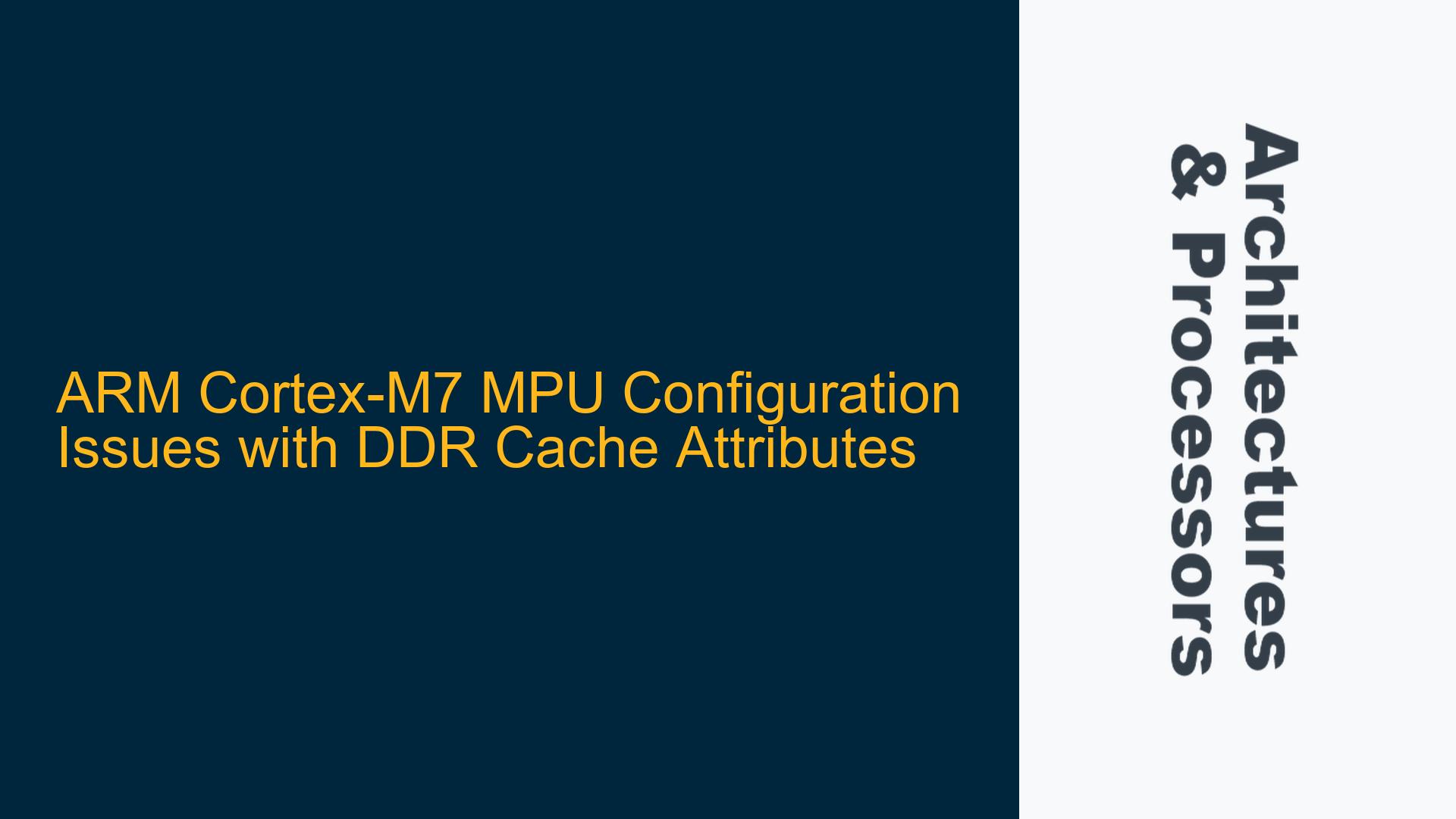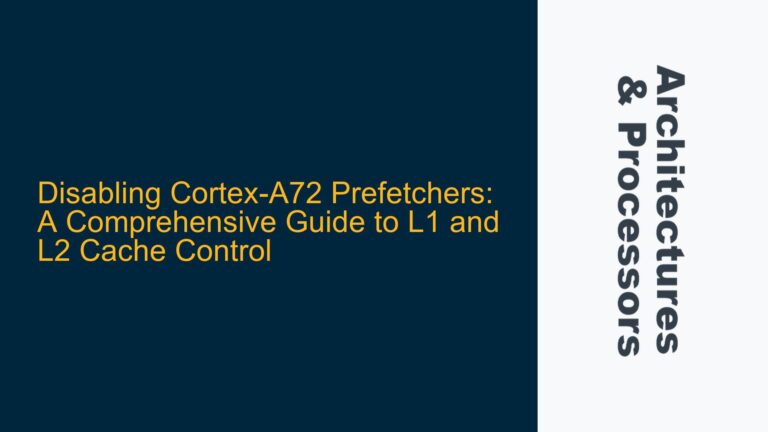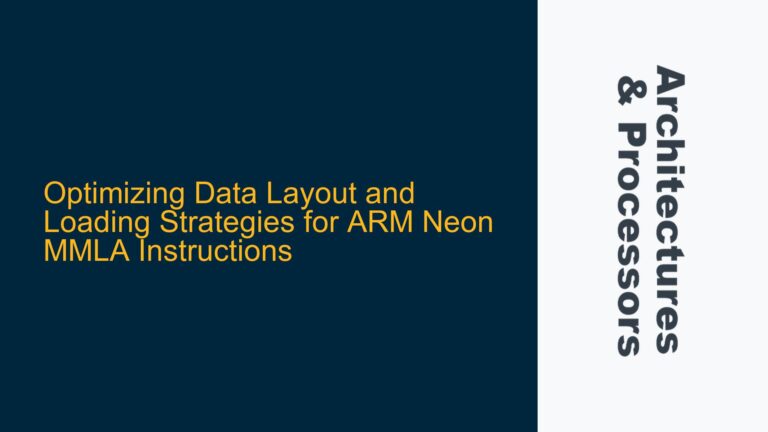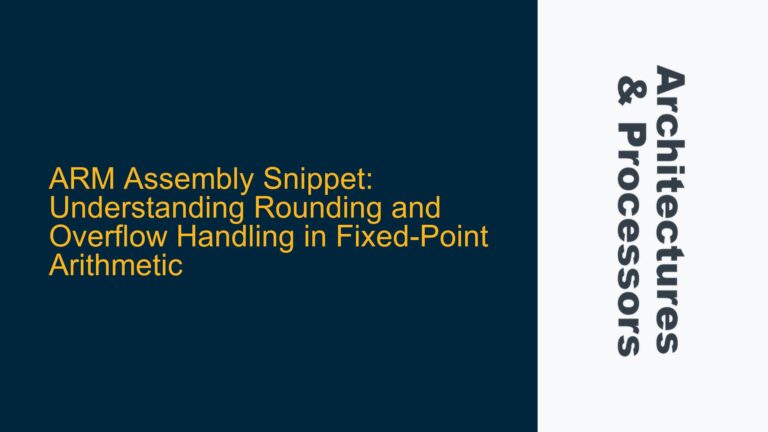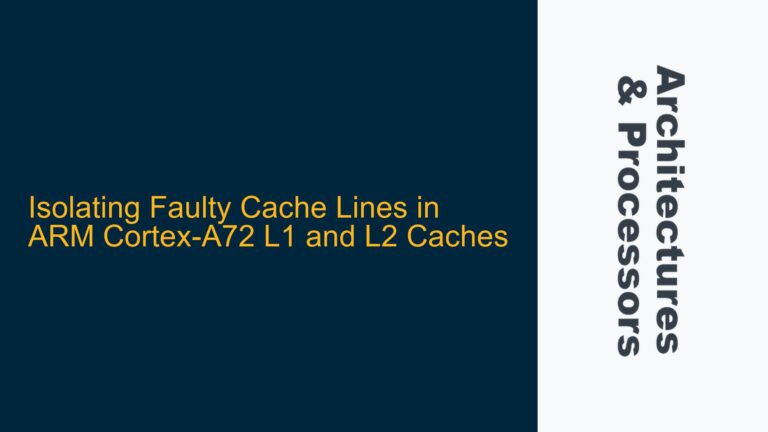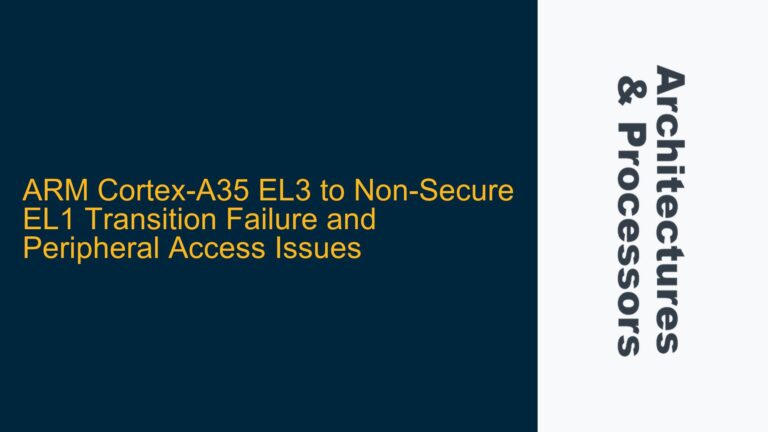ARM Cortex-M7 MPU Configuration and DDR Cache Attribute Challenges
The ARM Cortex-M7 is a powerful microcontroller core designed for high-performance embedded applications. One of its key features is the Memory Protection Unit (MPU), which allows developers to define memory regions with specific attributes such as cacheability, shareability, and access permissions. However, configuring the MPU for DDR (Double Data Rate) memory regions can be particularly challenging, especially when enabling cache attributes for these regions. This post delves into the intricacies of MPU configuration for DDR memory, focusing on the potential pitfalls and solutions when enabling cache attributes for DDR regions.
DDR Cache Attribute Configuration and System Freezes
The core issue arises when attempting to configure the MPU to enable cache attributes for DDR memory regions. Specifically, when the MPU is configured to mark DDR regions as cached normal memory, the system experiences random freezes, often leading to a complete system lockup and debugger disconnection. This behavior is observed even when the DDR memory is not actively accessed, suggesting that the issue is related to the MPU configuration itself rather than actual memory access patterns.
The DDR memory in question is mapped to the address range 0x6000_0000 to 0xDFFF_FFFF. The default MPU configuration for these regions typically marks them as device memory, which disables caching and ensures strict ordering of memory accesses. However, when the MPU is reconfigured to mark these regions as cached normal memory, the system becomes unstable. This instability manifests as random freezes, often occurring after a few seconds of operation, even when the code is running entirely from SRAM and not accessing the DDR memory.
The key question is whether there are inherent limitations in the ARM architecture that restrict the cacheability of DDR memory regions. The ARMv7-M architecture reference manual states that "a declared cache type can be demoted but not promoted." This statement implies that while the cache attributes of a memory region can be made more restrictive (demoted), they cannot be made less restrictive (promoted). In the context of DDR memory, this raises the question of whether the default cache attributes for DDR regions (typically device memory) can be promoted to cached normal memory.
Speculative Access and Cache Coherency Issues
One of the primary causes of system instability when enabling cache attributes for DDR memory is speculative access. The ARM Cortex-M7 core is capable of speculative memory accesses, which means it may attempt to prefetch data from memory regions before the data is actually needed. If the DDR memory is not initialized or if the memory controller is not properly configured, speculative accesses to DDR regions can lead to unpredictable behavior, including system freezes.
The ARM Cortex-M7 architecture includes mechanisms to disable speculative access to specific memory regions. However, if these mechanisms are not properly utilized, speculative accesses to uninitialized DDR memory can cause the system to crash. This is particularly problematic when the DDR memory is marked as cached normal memory, as speculative accesses can trigger cache line fills, which may lead to coherency issues if the memory is not properly initialized.
Another potential cause of system instability is cache coherency. When the MPU is configured to mark DDR regions as cached normal memory, the Cortex-M7’s cache controller assumes that the memory is coherent and can be safely cached. However, if the DDR memory is not properly initialized or if the memory controller is not configured to support cache coherency, this assumption can lead to cache coherency violations, resulting in system freezes.
Proper MPU Configuration and Cache Management for DDR Memory
To address the issues related to MPU configuration and DDR cache attributes, it is essential to follow a systematic approach to ensure that the system remains stable and that cache coherency is maintained. The following steps outline the recommended approach to configuring the MPU for DDR memory regions:
-
Disable Speculative Access to DDR Memory: Before enabling cache attributes for DDR memory, it is crucial to disable speculative access to these regions. This can be achieved by configuring the MPU to mark the DDR regions as device memory initially, which disables speculative access. Once the DDR memory is properly initialized, the MPU can be reconfigured to mark the regions as cached normal memory.
-
Initialize DDR Memory Before Enabling Caching: Ensure that the DDR memory is fully initialized before enabling cache attributes. This includes configuring the memory controller, performing memory training, and ensuring that the memory is in a stable state. Only after the DDR memory is initialized should the MPU be reconfigured to enable caching.
-
Use Data Synchronization Barriers (DSB) and Instruction Synchronization Barriers (ISB): When reconfiguring the MPU, it is essential to use DSB and ISB instructions to ensure that all previous memory accesses are complete and that the new MPU configuration is applied before proceeding. This prevents any potential race conditions that could lead to system instability.
-
Monitor Cache Coherency: After enabling cache attributes for DDR memory, closely monitor the system for any signs of cache coherency violations. This can be done by enabling hardware fault handlers and monitoring for any unexpected exceptions or system freezes. If cache coherency issues are detected, consider adjusting the MPU configuration or revisiting the DDR memory initialization process.
-
Verify MPU Configuration with Decoded RASR Values: When configuring the MPU, it is important to verify the configuration by decoding the RASR (Region Attribute and Size Register) values. This ensures that the intended cache attributes, access permissions, and region sizes are correctly applied. Misconfigured RASR values can lead to unexpected behavior, including system freezes.
By following these steps, developers can mitigate the risks associated with enabling cache attributes for DDR memory regions on the ARM Cortex-M7. Proper MPU configuration, combined with careful initialization and monitoring, can help ensure system stability and prevent the random freezes that are often observed when enabling caching for DDR memory.
In conclusion, while the ARM Cortex-M7’s MPU provides powerful features for memory protection and cache management, configuring it for DDR memory regions requires careful consideration of speculative access, cache coherency, and proper initialization. By understanding the underlying architecture and following best practices, developers can successfully enable cache attributes for DDR memory while maintaining system stability.
